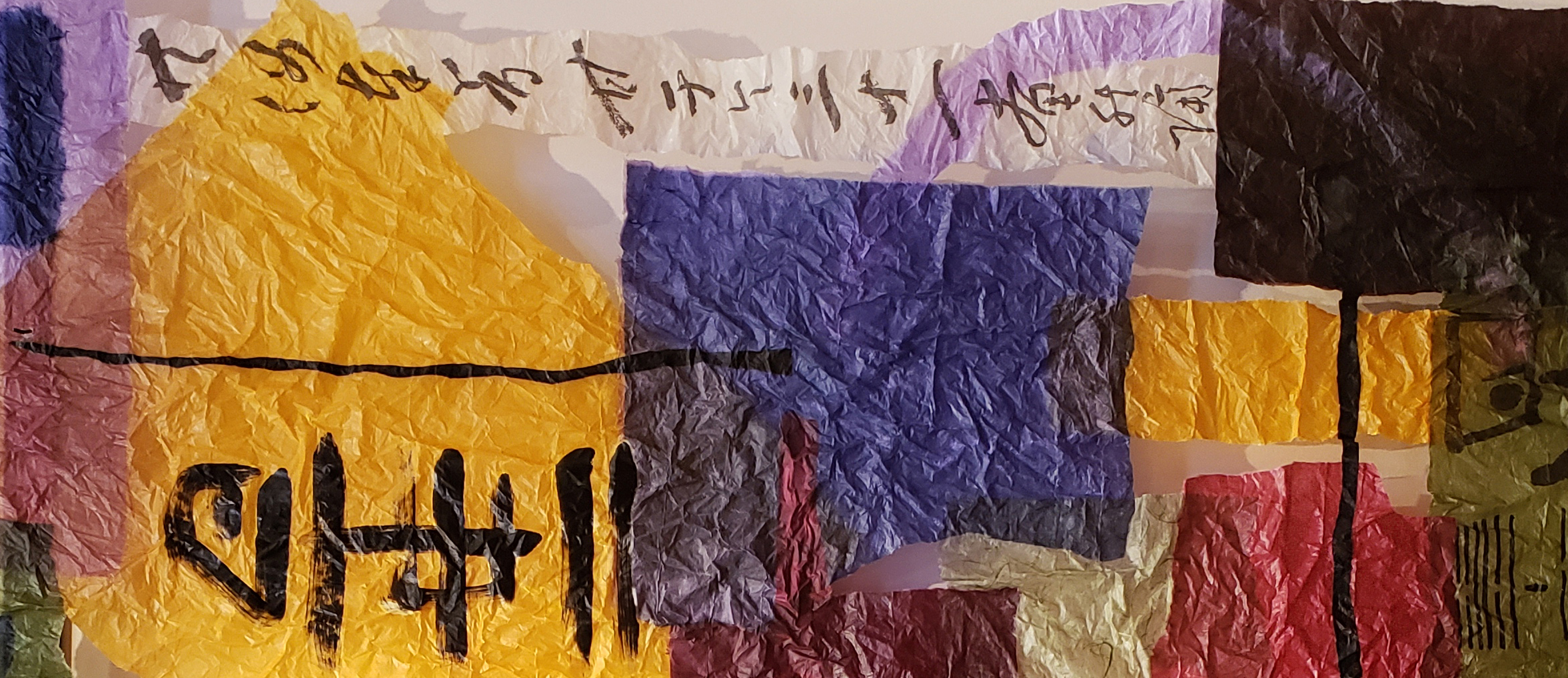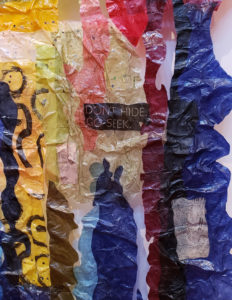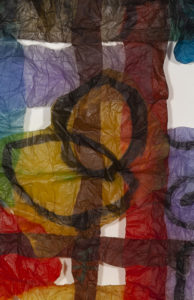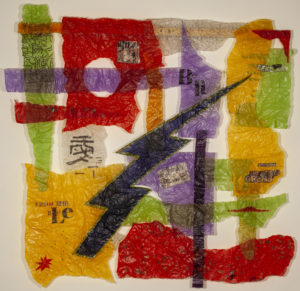
Making space for silence
 Recently a visitor to the studio asked me how I come up with the compositions I make out of Hanji (handmade mulberry paper from Korea). “After all”, she said, “the work is abstract. You’re not looking at something in nature and painting it as a plein air painter would. Where do your ideas come from?”
Recently a visitor to the studio asked me how I come up with the compositions I make out of Hanji (handmade mulberry paper from Korea). “After all”, she said, “the work is abstract. You’re not looking at something in nature and painting it as a plein air painter would. Where do your ideas come from?”
This is a question I’ve heard many times over the years. The answer can vary depending on my mood and the piece being discussed. This time I told the visitor I let the Hanji point the way. It starts with the colors that call out from the bins where the paper is stored and continues through how the shapes ask to be ripped when I start the collage. I may think it will go this way, but the paper says it wants to go THAT way.
There are times I do have a certain theme I start with, especially if the artwork is a commission piece. Ultimately, though, it’s the spontaneity of how the colors and textures of the paper begin to flow that dictates the final result.
 One of the most important elements is the use of the negative space — the space between that has a way of calming the artwork. It gives both the viewer and the work itself a place to breathe. It’s a deliberate choice to include these elegant spaces as I develop the overall design. To quote Miles Davis, “It’s not the notes you play; it’s the notes you don’t play.”
One of the most important elements is the use of the negative space — the space between that has a way of calming the artwork. It gives both the viewer and the work itself a place to breathe. It’s a deliberate choice to include these elegant spaces as I develop the overall design. To quote Miles Davis, “It’s not the notes you play; it’s the notes you don’t play.”
Often, after all the strips and pieces are assembled, I will get up on the high ladder, look down and squint my eyes. I am looking for places where that sense of quiet is needed within the composition. I come down from the ladder and begin to pull away pieces here and there. The work opens, making it stronger. I begin to see — and hear — the eloquence of the paper speaking its message through me.


